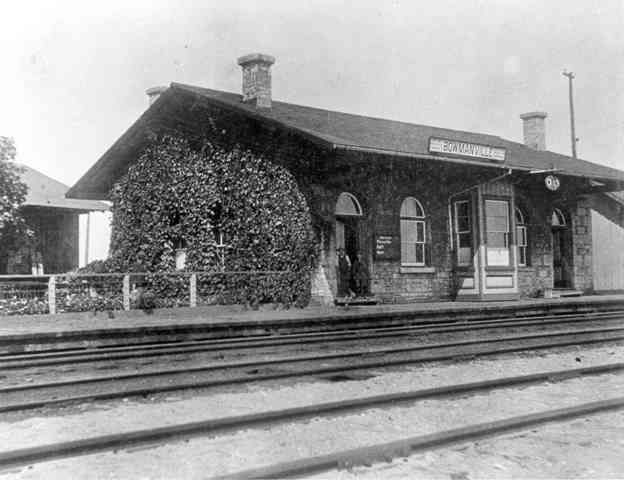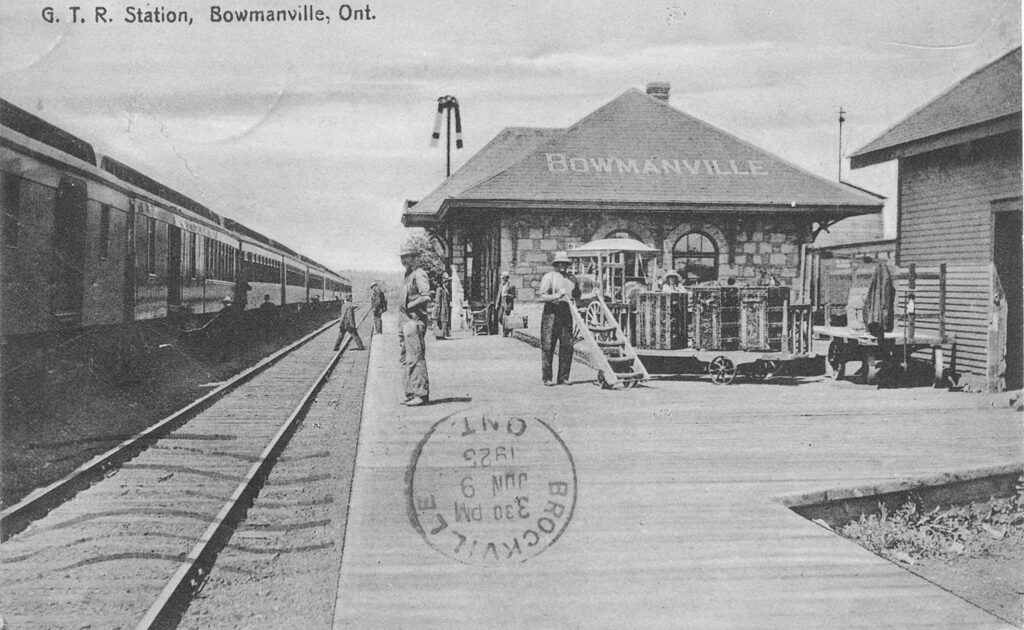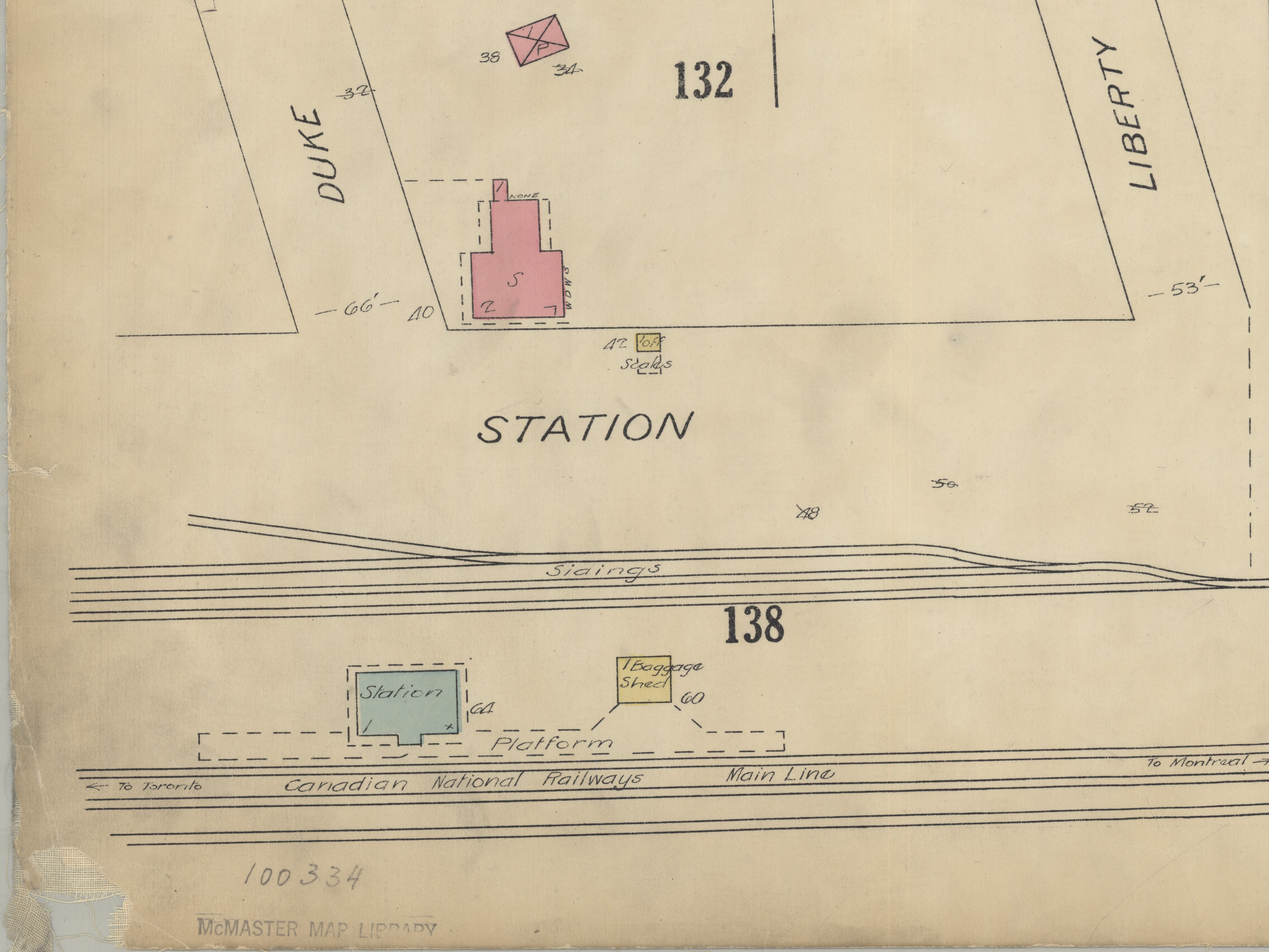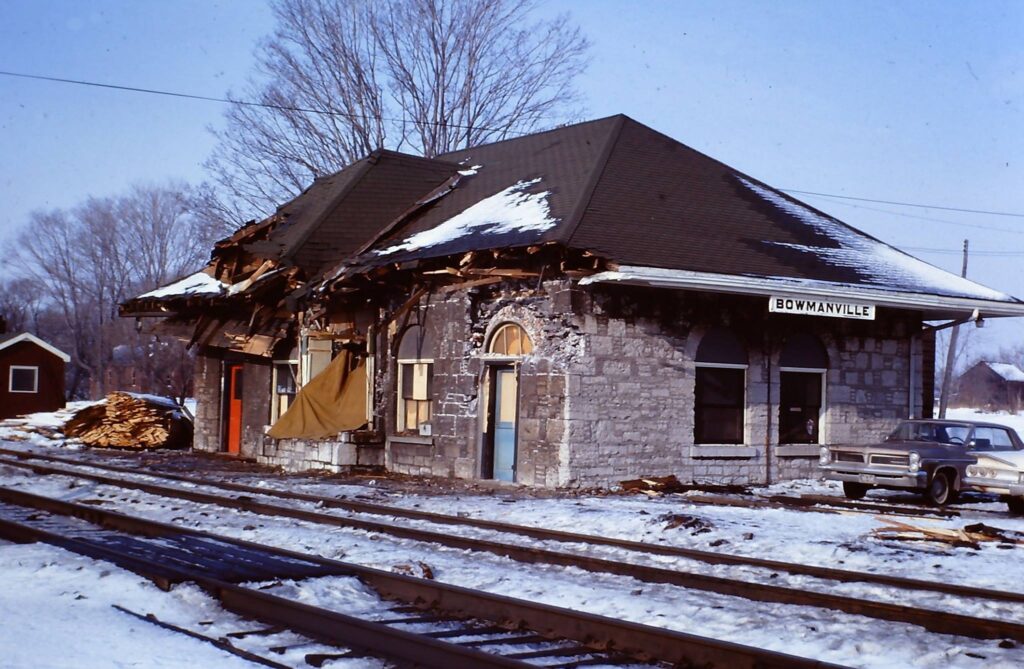Summary
While work was progressing on the Grand Trunk Railway south of the village of Bowmanville, a passenger station was built at the foot of Duke Street in 1856. It was a small limestone building with five arches on the lengthwise walls containing French doors, and two additional arches on both of the side walls. A total of four chimneys protruded from the simple pitched roof, each connected to a wood stove or fireplace for warmth during cold Canadian winters. Surviving examples of this design, albeit with slight modifications, can be found in Port Hope, Napanee, and Ernestown among others. The station was inconveniently located two kilometres south of Bowmanville’s main street, though for over half a century it would provide the only rail service to local residents. The first train arrived at Bowmanville Station on October 27th, 1856, and Bowmanville was incorporated as a town two years later. By 1866 its population would grow to approximately 3,500, and a total of six trains were stopping at Bowmanville Station per day by the time of Canada’s confederation in 1867.
Parts of the station building were gradually modified in the decades after its completion, much like all other examples of this early Grand Trunk design. Many of the arched doorways were converted into windows. A bay window utilizing wood or brick was added onto the south wall to provide better visibility from the station agent’s office. By 1890 service to the station had increased to ten trains per day. Between 1901 and 1903, the Grand Trunk laid a second main track through Bowmanville to allow for a higher volume of trains. As part of this work, an eight-kilometre segment of the line from a point immediately west of Bowmanville Station was realigned as much as 1.5 kilometres to the south in some places. The station building was heavily renovated in 1911, receiving a new hipped roof and a limestone bay window to better match the surrounding walls. The result was nearly unrecognizable from its original design, and it now more closely resembled stations built by the Grand Trunk around the turn of the 20th Century.
The opening of the Canadian Northern Railway through the north end of Bowmanville in 1911 followed by a Canadian Pacific line right through the middle of town in 1914 would briefly provide some competition to the Grand Trunk station. However, even after the financially-ailing Grand Trunk was nationalized and merged into Canadian National in 1923, service to Bowmanville would increase to thirteen trains per day by 1940. It would remain consistent into the postwar era, although passenger ridership would begin to decline due to the popularization of automobiles and air travel. When Highway 401 was constructed through the south end of Bowmanville in 1952, it ran directly between the railway and where the majority of the local population lived to the north. Duke Street was completely severed in two and a highway onramp was built in its place. Since the highway ran parallel with the railway it further incentivized automobile use and resulted in far less ridership at Bowmanville Station. On January 7th, 1968, CN freight train 405 derailed in front of the station resulting in significant damage to the limestone on the south wall as well as part of the roof. After receiving repairs and being closed to passengers, the station was repurposed by CN as a service building until it was abandoned in 1979. It was finally torn down in April 1981.
Condensed Station Info:
| Location: | Served By: | Current State: | Date Built: | Date Demolished: |
| Duke Street | Grand Trunk (1856 – 1923) Canadian National (1923 – 1968) | Demolished | 1856 | 1981 |





